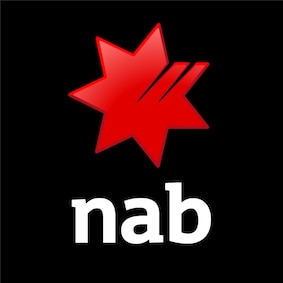How to value a business you're selling or buying - NAB
Putting a price on a business can be challenging – whether you're the buyer or the owner who's looking to sell. Here, we reveal some essential tips and methods for assessing business value.
How to value a business
Thinking of buying a business – or selling your own? Pricing a business for sale can be tricky. What you think a business is worth and what the other party thinks it’s worth are usually two different figures.
For a buyer, the worth of a business hinges on how much profit it will make, balanced by the risks involved. However, historic cash flow, profitability and asset values are only the starting points. It’s often the hard-to-measure factors such as key business relationships and goodwill that provide the most value.
What affects business viability?
There are three basic criteria that affect the business value:
- circumstances of the sale
- tangible versus intangible assets
- years of operation.
Circumstances of the sale
The reasons for selling a business can affect its value. A forced sale is likely to drive down the value. For example, an owner in poor health may accept the first offer they receive, while an owner who goes through lengthy negotiations may get a higher price.
Tangible versus intangible assets
A business that owns property, machinery or stock-in-hand has tangible assets. These will have some resale value, making the business easier to value (including business asset valuation).
Many businesses have almost no tangible assets beyond office equipment. However, their intangible assets may have significant value, such as a well-respected brand, customer goodwill, intellectual property and potential for growth.
These intangibles can be harder to value, so ask your accountant for guidance if necessary.
Years of operation
The longer the business has been operating, the better the track record, cash flow and loyal customers who provide repeat business.
Be wary of businesses for sale that have only been trading between one and two years, such as bars or cafes. Such companies may be experiencing current popularity but the market may be about to turn away.
Business valuation methods
Remember, the true value of a business is always what someone is willing to pay for it. To arrive at a figure, buyers use various valuation methods. This is usually just to give a sense of reassurance that they're not paying too much. Here are the main methods.
Asset valuation
For a simple business asset valuation, add up the assets of a business and subtract the liabilities. You might want to use a business value calculator to do this.
So, if a business has $500,000 in machinery and equipment, and owes $50,000 in outstanding invoices, the asset value of the business is $450,000.
As a buyer, you could decide to just buy the assets of a business rather than take over the business as a going concern. This way, any outstanding debts or tax payments are all payable by the previous owner.
Use an asset valuation if you own or are interested in a stable, asset-rich business. The starting point for a business asset valuation is the assets listed in the accounts. This is known as the ‘net book value’ (NBV) of the business. You then refine the NBV figures for the major items, to reflect economic reality. For example:
- property or other fixed assets may have changed in value
- old stock may need to be sold at a discount
- debts to the business that clearly aren’t going to be paid.
Intangible items such as software development costs are usually excluded.
Price earnings ratio
The price earnings ratio (P/E ratio) is the value of a business divided by its profits after tax. For example, a company with a share price of $40 per share and earnings per share after tax of $8 would have a P/E ratio of five (40/8 = 5).
When valuing a business, you can use this equation: Value = Earnings after tax × P/E ratio.
Once you’ve decided on the appropriate P/E ratio to use, you multiply the business’s most recent profits after tax by this figure. For example, using a P/E ratio of 6 for a business with post-tax profits of $100,000 gives a business valuation of $600,000.
Which P/E ratio to use?
Deciding on an appropriate P/E ratio to use is not easy and you’ll have to justify your choice to a potential buyer or seller. Some industries have ‘standard’ P/E ratios for valuing a business, so ask your accountant if there are industry averages you can use.
Entry cost valuation
Rather than buy a business, you could start a similar venture from scratch. An entry cost valuation reflects what the process would cost you. To make an entry cost valuation, calculate the cost to the business of:
- purchasing or financing its assets
- developing products or services
- recruiting and training employees
- building up a customer base.
This allows you to make a comparative assessment. So, you might calculate the following:
- a cost of $500,000 to buy the set-up equipment
- a cost of $50,000 a month for overheads
- a required 12 months’ trading to get a customer base.
A business that already has all of this is worth at least $1.1m ($500,000 for equipment and $600,000 overheads for 12 months). You can now factor in any cost savings you could make, such as use of better technology, setting up in a less expensive area or other cheaper alternatives.
Industry rules of thumb
In some industry sectors, buying and selling businesses is common. This has led to industry-wide ‘rules of thumb’, which are dependent on factors other than profit. For example:
- turnover for a computer maintenance business or a mail-order business
- number of customers for a mobile phone airtime provider
- number of outlets for a real estate agency business.
Buyers will work out what the business is worth to them. Take the example of a computer maintenance business with 10,000 contracts but no profits. To one buyer, the business may be worth comparatively little. However, a larger competitor may pay $100 per contract to buy the business because it could merge the two businesses and make larger profits.
Other issues
The key source of business value may be something that can’t easily be measured. Putting a value on intangible assets isn’t easy because that value can vary depending on the nature of the assets and the industry.
Get advice from your business advisers, Chamber of Commerce or industry association. See the following examples.
Strong relationships with key customers or suppliers
For example, if a business holds a licence or distributor rights across Australia for a product expected to be successful, the business’s value will increase accordingly.
Management stability
If the owner-manager or other key people are going to leave, the business may be worth far less. For example, the profitability of an advertising agency may collapse if a key creative person leaves.
Similarly, if key salespeople leave, they may take important customers with them. Any written agreements or incentives to retain key employees could add value, but they could also damage the business value if a potential buyer intends to bring in a new team.
Intellectual property ownership
If the business owns the rights to patents, copyrights or trademarks, these will add value to the purchase price of a business. For example, if you’re selling a patented invention, you can value your business higher than a similar business selling an unprotected product. In some industry sectors, buying and selling businesses is common. This has led to industry-wide ‘rules of thumb’, as previously mentioned, which are dependent on factors other than profit.
Buyers will work out what the business is worth to them. Take the example of a computer maintenance business with 10,000 contracts but no profits. To one buyer, the business may be worth comparatively little. However, a larger competitor may pay $100 per contract to buy the business because it could merge the two businesses and make larger profits.
Next steps
- Get expert advice. Talk to your accountant about possible valuations of your business.
- Google it. To work out how to value a company, search online for similar businesses for sale to get a feel for the market.
- Ask your accountant if they have past examples of similar businesses for sale and what they sold for. Remember that ultimately, your business is worth whatever someone will pay for it.
- Review the IP Australia website for steps you can take to protect and enhance the value of intangible business assets such as trademarks and designs. If you’re buying a business, check what intellectual property it has protected.
Speak to us about your finance and lending needs. Request a call back or call us on 13 10 12.
Other business moments
How to increase the market value of your business
We explore steps to grow the market value of your business.
Maximising your sale price: A guide to selling your business
Find out how to negotiate a better business purchase price.
Creating a retirement financial plan
The key to enjoying retirement life is careful and early planning. Read our guide on how to create a retirement budget to secure your future.
Related products and services
Financial planning and advice
Get a strong partner supporting your business. NAB can refer you to an adviser from Bridges Financial Services or JBWere.
Loans and finance
Starting a business or looking to expand? Our range of business loans, overdrafts, equipment and trade finance options can help you achieve your goals.
Trading and investments
Discover trading, investment and financial advice options to help you manage your wealth and plan for retirement.
Get in touch
Contact us
Explore our business banking contact information and get support with a wide range of products, services and topics.
Visit a NAB branch
Our business bankers are located all around Australia.
Important information
Apologies but the Important Information section you are trying to view is not displaying properly at the moment. Please refresh the page or try again later.
The information contained in this article is intended to be of a general nature only. It has been prepared without taking into account any person’s objectives, financial situation or needs. Before acting on this information, NAB recommends that you consider whether it is appropriate for your circumstances. NAB recommends that you seek independent legal, financial and taxation advice before acting on any information in this article.





